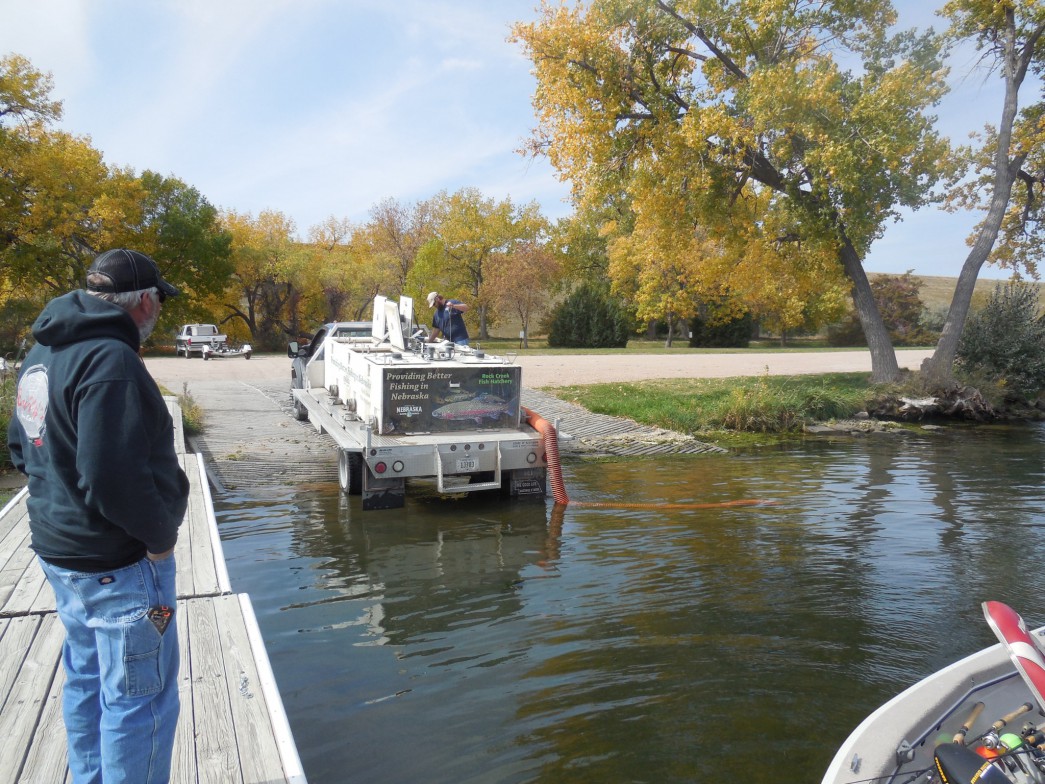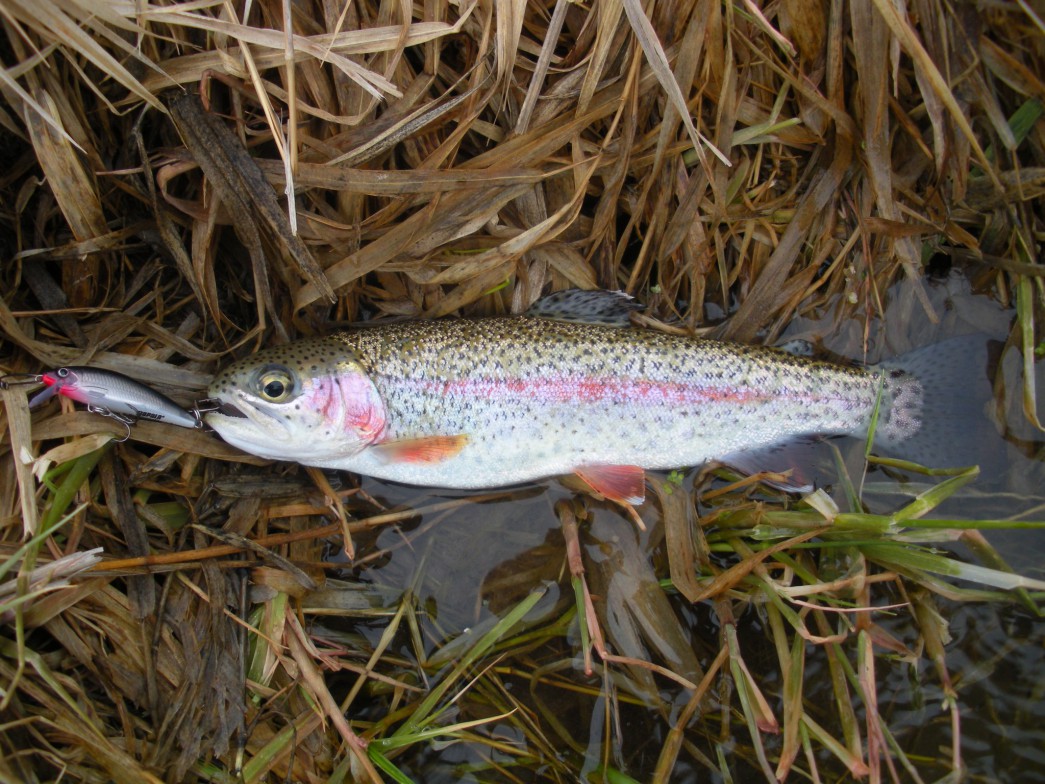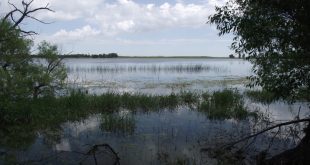I know the spring trout stocking schedule went out in a news release last Friday, but my phone continues to ring, the weather is nice, and folks are ready to go fishing! We have a lot of fish out there already, you do NOT have to wait for the stocking truck before going fishing, but the put & take trout stocking is very popular especially for young anglers and beginners, so look this list over and then GO FISH!
| Stocking Date | Location | Number | Comments |
| 17 March | Bridgeport NW | 1,400 | |
| Middle Morrill | 450 | ||
| North Morrill | 1,350 | ||
| 19 March | Rock Creek Lake | 1,000 | Rock Creek Lake SRA |
| Fremont #2 | 3,750 | Fremont Lakes SRA | |
| Century Link Pond | 3,350 | Mahoney State Park | |
| 20 March | Curtis Golf Course | 150 | 11:00 |
| Melham Park | 1, 500 | Broken Bow, 12:30 | |
| Humbolt City Park | 350 | ||
| Auburn Fairgrounds | 800 | ||
| Stanton City Lake | 600 | ||
| Pawnee City Lake | 300 | ||
| Ft. Kearny #6 | 600 | Ft. Kearny SRA | |
| Holdrege City Park | 1,000 | ||
| Ord City Lake | 750 | ||
| Ponca State Park | 900 | Ponca State Park | |
| 21 March | TaHaZouka Park | 1,500 | Norfolk, 11:00 |
| Barnett Park | 1,000 | McCook, 11:00 | |
| Grand Island Such’s Park | 450 | 11:15 | |
| Lake Halleck | 1,100 | Papillion, 11:45 | |
| Oxford City Pond | 150 | 12:00 | |
| Pawnee Park West | 1,500 | Columbus, 12:15 | |
| Heartwell Park | 600 | Hastings, 12:15 | |
| Steinhart Park | 1,100 | Nebraska City, 1:00 | |
| Holmes Lake | 4,000 | Lincoln, 1:00 | |
| Windmill #2 | 650 | Windmill SRA, 1:00 | |
| Elm Creek | 1,000 | Webster County, 2:00 | |
| Week of March 23 | Ponca State Park | 600 | Ponca State Park |
| Fremont #2 | 1,000 | Fremont Lakes SRA | |
| Niobrara State Park | 750 | Niobrara State Park | |
| 24 March | Terry’s Pit | 1,500 | Terrytown |
| Scottsbluff Zoo Pond | 900 | ||
| 26 March | Lake Ogallala | 4,000 | Lake Ogallala SRA |
Note that some times are listed for some of those stockings. Those are the best estimates of the times the stocking trucks will be at those locations. Yes, show up and watch the fish being stocked! However, keep in mind that a flat tire or breakdown can change everything. We will keep those schedules as well as possible, but sometimes there are “unforeseen circumstances”.
How To Catch Them
Let me repeat something I have written in my blog before. Here are some ideas on catching those trout:
Keep in mind that the catchable-size rainbows that are being stocked have lived their entire lives in a fish hatchery. They are used to swimming around in a raceway or pond and having artificial feed dropped on top of them. These fish are not rocket-surgeons or brain scientists. I have seen them start biting as soon as they come off the hatchery truck, in fact I have seen them suck #12 Marlboro Butts off the surface as soon as they came off the hatchery truck. But usually they will bite better after they have had a day or two to acclimate to their new environment. Once they are stocked, they often cruise the shoreline or a drop-off like they would in a hatchery pond or raceway. Corners or points will tend to concentrate cruising fish; you will often find fish in the vicinity of the stocking location too. Trout have an excellent sense of smell and will sample a variety of baits as they try to figure out what is food and what is not. Nightcrawlers will work as well as a variety of prepared baits. For example, there are a variety of PowerBait products made just for trout, and they will catch fish, Berkley Trout Baits. Some folks like to try corn and cheese, and those will catch fish too; so will a variety of commercially-prepared salmon eggs. If you are still-fishing for the trout start fishing near the bottom, but I would recommend getting your bait up off of the bottom a few inches to make it easier for the trout to find. You can use floating jig-heads to float your baits off the bottom or consider adding a small marshmallow to your hook to float the bait off the bottom and provide even more attraction. Keep your eyes open as the trout may be cruising way off the bottom at times and you will be able to spot those fish. Suspending baits below a float (i.e. “bobber”) would be another presentation to try especially if you see fish cruising higher in the water column.
The catchable-size rainbows are also curious especially as they are sampling new baits and learning what to eat. Besides appealing to their senses of smell and taste, use some color to attract their attention. A good way to cover some water and find fish would be to throw some small spinners, spoons, or crankbaits that give off some flash. Even though the put-and-take rainbows have been raised on artificial feed, fly-anglers can get them to bite too. Initially some wet flies or nymph patterns that just look “buggy” or have some bright attractive colors will get some curious fish to bite. Later on, after the trout have acclimated to their new environment, they will begin to feed on aquatic insects and other prey items found in the waters in which they were stocked and fly anglers should try to imitate those natural food items. Even keep your eyes open on warm afternoons as those rainbows will take advantage of insect hatches that occur (likely some type of midge).
What To Do With Them
If you need some ideas on what to do with those trout after you catch them, how to clean them, go back and check out this blog post, Happy Thanksgiving, What’s To Eat?. You also will find some ideas there on my favorite way to prepare trout–smoking. Know what the hardest part is about smoking a fish? Getting them lit!
Sorry.
My buddy Greg Wagner has another idea for preparing trout here, Take Kids to the Trout Lake. Or, keep it simple and after you get that trout field-dressed, put some butter, lemon and rosemary inside the body cavity, wrap the fish in foil and put it on the grill!
Again let me finish by reminding you that we stock the catchable-size rainbow trout in urban and parks waters across the state NOT so folks can load their freezers with eating-size trout. We stock those fish where they are easily accessible to a bunch of youngsters and beginning anglers. The weather is nice, it is time to grab the kids and GO FISH!
 Nebraskaland Magazine
Nebraskaland Magazine





